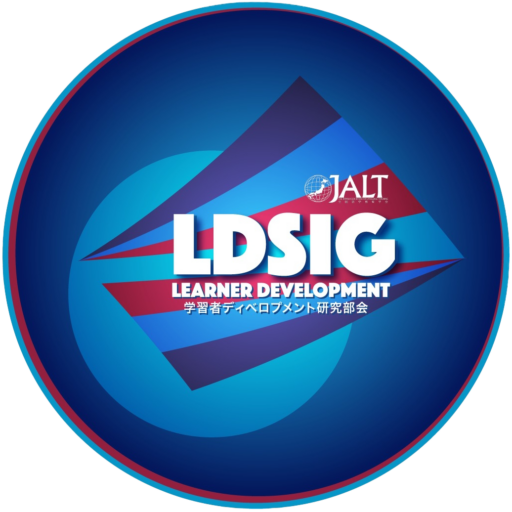LD SIG Kansai Get Together #3 Report
TOC:
The third Kansai Get-together was held February 14th, 2016, 10:30 – 13:00, at Hito Machi Koryukan Community Centre in Kyoto. In attendance: Ann Flanagan, Gretchen Clark, Mary Hillis, Richard Silver, Jennifer Teeter, Shuji Narita, Hiroyo Nakagawa, Chris Fitzgerald and Anita Aden
Kansai Get Together #3 discussion highlights:
We began with greeting newcomers and a short discussion about working with university administrators in regards to support for English programs. There was a lot of support given by the participants today, which helped alleviate the feeling of isolation.
Next, we began the main discussion for today’s gathering: Writing projects and samples that further explained ideas that were brought up at last month’s meeting.
1. Junior high school writing samples from a global writing class and a regular class included useful expressions, clear guidelines of pre-writing (cluster and mind map), structure and content. The students had access to their vocabulary notebooks of words learned in class and they asked clarifying questions about the writing assignment directly to the teacher, if needed.
In this class, students enjoy a points system for completing homework and other assignments, which results in a successful learning environment.
LINK:
Student Participation Tool: Class DOJO http://www.classdojo.com
2. You Are A Writer project begins by creating a timeline of a student’s personalized history of all language learning and experiences. The positive and negative experiences are reflected on the timeline and may include drawings and other symbols. Then students can write a paragraph of their language learning history or turning points that affected them. Students also practice writing titles, writing peer comments and writing transitions to show chronological order. Participants gave suggestions about writing a personal literacy history parallel between 1st and 2nd languages as another idea for this project.
LINKS:
Personal Literacy History
• http://fitzgeraldenglishwhs.weebly.com/uploads/1/3/0/6/13068304/literacyproject-1.pdf
• https://prezi.com/4ufxqgieaj0y/personal-literacy-history/
• http://www.123helpme.com/search.asp?text=personal+literacy+essay&sort=relevance&x=16&y=13
3. Can-do writing guidelines were introduced as part of a Reflective Diary assignment in a first year writing course. There are two 15-week classes taught by a different teacher each term. The assignment reflects the CEFR standards, which will be the focus of the conference in March (see announcements for details). The handouts for this Reflective Diary assignment included sections for: teacher feedback, student self-evaluation (positive and future goals) and responding to Can-do statements with a ‘yes’, ‘partly’ and ‘no’. The handout also requires students to check the box to indicate that they have read the plagiarism policy about academic honesty. The intended use of the reflective diary is to chart the students‘ progress over two years as the booklet is passed along to students and their writing teachers.
LINKS:
Revision Assistant is a new tool added to ‘Turn It In’
• http://turnitin.com/en_us/what-we-offer/revision-assistant
Grammar and Spell Check tools
Academic Writing Wizard
http://www.aw-wizard.com/
4. TOEIC textbooks are now being written for the revised test that will be updated in May 2016. If you are interested in contributing to a new textbook, please contact Shuji Narita: tomatobath@yahoo.co.jp
LINK:
http://news.ets.org/news/ets-to-update-the-toeic-listening-and-reading-test-in-may-2016
5. False beginners writing and speaking classes: Discussion was brief but helpful to the instructor that currently teaches students who must repeat their writing class due to a failed grade. The students struggle to write about the university required writing topics of social issues and other challenging topics.
The goal of the class is to teach paragraph writing, so discussion focused on using English paragraph structures but initially written in Japanese to check for student comprehension. As students become more confident in understanding the paragraph model, then more substitutions in English can be made.
Additional links:
Interpreter of Maladies by Jhumpa Lahiri
• http://www.enotes.com/topics/interpreter-maladies
March Get-together announcement:
- Kansai Get Together #4 on Saturday, March 26th will be at the CEFR conference at Osaka University – Nakanoshima Centre.
- MAP: http://www.onc.osaka-u.ac.jp/others/map/img/map_en.pdf
- TIME: 12:00 (Lunch together)
- MEET AT: Conference registration area. Please bring lunch with you.
CEFR Conference Announcement, March 26-27, 2016
Common European Framework of Reference(CEFR) for languages
This 2-day conference is entirely FREE of charge. If you would like to attend the conference, please email
For information, please visit the FLP SIG site – CEFR conference on March 26-27:
https://sites.google.com/site/flpsig/critical-constructive-asessment-of-cefr/criconcefiii-march-2016
If you have any questions, please contact the conference co-chair:
Maria Gabriela Schmidt flpsig@gmail.com
